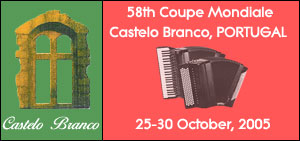| 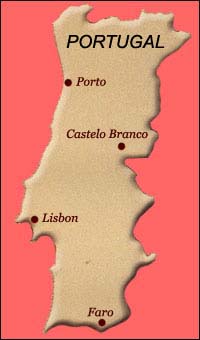 Castelo
Branco, centrally positioned between the North and the South of Portugal, has
ever since remote times been the borderland for two distinct cultural regions,
ie: the world of granite and the world of slate. In terms of human population,
this area of Castelo Branco has been inhabited ever since the Bronze Age, and
despite the turbulent historical times, it was during the medieval period, with
the construction of its borders, that Castelo Branco took on its relevant regional
role. Castelo
Branco, centrally positioned between the North and the South of Portugal, has
ever since remote times been the borderland for two distinct cultural regions,
ie: the world of granite and the world of slate. In terms of human population,
this area of Castelo Branco has been inhabited ever since the Bronze Age, and
despite the turbulent historical times, it was during the medieval period, with
the construction of its borders, that Castelo Branco took on its relevant regional
role.
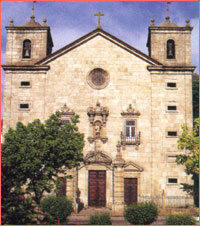 It
was after the issue of the charter of Pedro Alvito (13th Century), Master of the
Templars, that this place developed its two important functions; firstly, defense
of the area and, secondly, the growth of the countryside with regard to both the
breeding of animals and the cultivation of crops. These two aspects of development
are clearly demonstrated in a drawing/sketch done at the beginning of the 16th
century. If one pays heed to the profile of the borough as drawn up by "Duarte
d'Armas, one can understand the way in which the urban city evolved. It had a
castle as its early nucleus, situated on top of a hill, and this was where Castelo
Branco was born. The village that surrounded the templar's castle soon began acquiring
new spaces, extending all the way down in an easterly direction from the top of
the hill. It
was after the issue of the charter of Pedro Alvito (13th Century), Master of the
Templars, that this place developed its two important functions; firstly, defense
of the area and, secondly, the growth of the countryside with regard to both the
breeding of animals and the cultivation of crops. These two aspects of development
are clearly demonstrated in a drawing/sketch done at the beginning of the 16th
century. If one pays heed to the profile of the borough as drawn up by "Duarte
d'Armas, one can understand the way in which the urban city evolved. It had a
castle as its early nucleus, situated on top of a hill, and this was where Castelo
Branco was born. The village that surrounded the templar's castle soon began acquiring
new spaces, extending all the way down in an easterly direction from the top of
the hill.
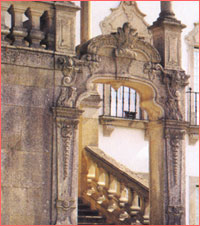 Today,
many features of this area have been preserved as they were in the old days. The
streets still climb gradually up along the slope in the direction of the castle,
with their decorate gateways recalling the names of the trades of the people of
those times (with such examples as Peleteiros Street, Potters' Street, Blacksmith
Street), with small farming plots (which are still being used), and the olive
groves along the southern slope; one can still take note of all these characteristics
of the small world of the streets, along with their typical smells and sounds. Today,
many features of this area have been preserved as they were in the old days. The
streets still climb gradually up along the slope in the direction of the castle,
with their decorate gateways recalling the names of the trades of the people of
those times (with such examples as Peleteiros Street, Potters' Street, Blacksmith
Street), with small farming plots (which are still being used), and the olive
groves along the southern slope; one can still take note of all these characteristics
of the small world of the streets, along with their typical smells and sounds.
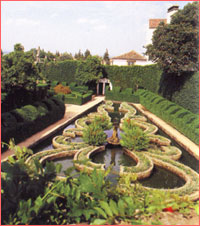 For
centuries, it was its position which bestowed upon Castelo Branco all the characteristics
of a collection of strongholds and the necessary conditions, and thereby affecting
the fate and the growth of the city. Out of the ancient function of defense of
the Castle, there developed a good vantage point, from which, on a clear day,
one can see the entire course of the upper part of the river Tejo to the Raiana
zone, the area which borders Spain. For
centuries, it was its position which bestowed upon Castelo Branco all the characteristics
of a collection of strongholds and the necessary conditions, and thereby affecting
the fate and the growth of the city. Out of the ancient function of defense of
the Castle, there developed a good vantage point, from which, on a clear day,
one can see the entire course of the upper part of the river Tejo to the Raiana
zone, the area which borders Spain.
Today Castelo Branco is the commercial
and administrative canter of the region named Beira Baixa. The restored walls
of the 16th Century castle still keep watch over the city today.
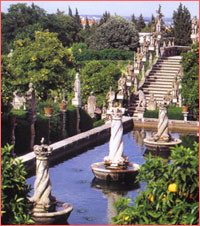 The
most outstanding attraction to be seen is the Jardim Episcopal adjoining the palace
of the Bishop. Created in the 18th Century the layout is very formal but the stonework
and statues that decorate the garden are so heavily Baroque in style it leaves
a distinct impression in your memory. The
most outstanding attraction to be seen is the Jardim Episcopal adjoining the palace
of the Bishop. Created in the 18th Century the layout is very formal but the stonework
and statues that decorate the garden are so heavily Baroque in style it leaves
a distinct impression in your memory.
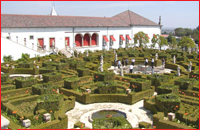 Carved
stone replicas of saints, monarchs, animals and general objects, stand silently
in witness to your presence. The then hated Spanish Kings are reproduced in half-size
as a political statement of that time. Carved
stone replicas of saints, monarchs, animals and general objects, stand silently
in witness to your presence. The then hated Spanish Kings are reproduced in half-size
as a political statement of that time.
Within the palace is the Museu
Francisco Tavares Proença Júnior, displaying amongst sacred objects
some fine examples of silk-embroidered bedspreads from this region. These bed
covers have been produced in this area for several hundred years and are know
as "colchas".
|

